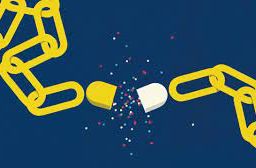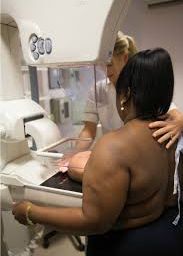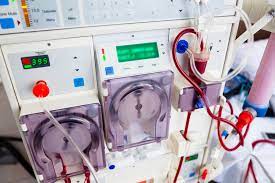
Dialysis Patient Guide: Understanding Treatment and Kidney Care
Navigating the complexities of kidney health can be daunting, but our comprehensive ” patient guide” is here to illuminate your path. Whether you’re new to the world of dialysis or seeking to enhance your understanding, this guide delves into essential topics to empower you on your journey.
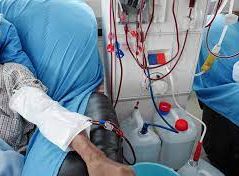
Living with kidney disease and undergoing dialysis treatment can be a challenging journey, but knowledge is power. In this comprehensive guide, we’ll walk you through everything you should know as a dialysis patient. From understanding the basics of dialysis to managing your daily life and preparing for the future, we’ve got you covered.
Dialysis at a Glance:
Dialysis is a life-saving treatment for individuals with kidney disease. It functions as an artificial kidney, filtering waste products and excess fluids from your blood when your own kidneys can’t do the job effectively.
Types of Dialysis:
There are two primary types of dialysis—hemodialysis and peritoneal dialysis. Hemodialysis involves a machine that filters your blood externally, while peritoneal dialysis uses your abdominal lining as a filter.
Choosing a Dialysis Center:
Selecting the right dialysis center is crucial. Consider factors such as location, treatment schedule compatibility, and the reputation of the center in providing quality care.
Understanding Your Treatment Schedule:
Typically, hemodialysis patients undergo treatment three times a week, while peritoneal dialysis patients may have more flexibility. Knowing your schedule is essential for planning your life around dialysis.
Vascular Access:
For hemodialysis patients, proper vascular access is vital. Learn about the different access options, like arteriovenous (AV) fistulas, grafts, or catheters, and discuss with your healthcare team which is best for you.
 What to Expect During a Dialysis Session:
What to Expect During a Dialysis Session:
Dialysis sessions can last several hours. Here’s what you can generally expect during a hemodialysis session, which is the most common type of dialysis:
1. Check-In and Registration:
– When you arrive at the dialysis center, you’ll need to check in and register. The staff will verify your identity and ensure that your medical records are up to date.
2. Preparation:
– You will be guided to a treatment area where the dialysis machine is set up. A healthcare provider or nurse will assess your vital signs, such as blood pressure, pulse, and temperature, to ensure you are stable for the session.
3. Vascular Access:
– If you have a fistula, graft, or central venous catheter as your vascular access, the healthcare provider will assess and prepare it for the dialysis session. This is a critical step to ensure safe and efficient blood flow.
4. Needle Insertion:
– For hemodialysis, two needles are typically inserted into your vascular access—one to carry blood from your body to the dialysis machine (arterial needle) and the other to return filtered blood to your body (venous needle).
– The insertion of these needles can be uncomfortable but is generally well-tolerated by most patients.
5. Connection to the Dialysis Machine:
– Once the needles are in place, you’ll be connected to the dialysis machine. Your blood will flow out of your body through the arterial needle, pass through the dialyzer (artificial kidney) in the machine, and then return to your body through the venous needle.
6. Monitoring:
– Throughout the session, healthcare providers will closely monitor your vital signs and the dialysis machine to ensure everything is functioning correctly.
– The machine carefully controls the rate of blood flow and the removal of waste products and excess fluid from your blood.
7. Treatment Time:
– The duration of a hemodialysis session can vary but typically lasts around 3-5 hours, depending on your specific treatment plan and needs.
8. Comfort and Activities:
– You will have the opportunity to read, watch TV, listen to music, or simply rest during the session. Many dialysis centers provide reclining chairs or beds for your comfort.
9. Side Effects:
– Some patients may experience side effects during dialysis, such as muscle cramps, nausea, low blood pressure, or a feeling of coldness. Inform the healthcare providers if you experience any discomfort or side effects, as they can make adjustments to improve your comfort.
10. Conclusion of Session:
– Once the prescribed treatment time is complete, the healthcare provider will disconnect you from the dialysis machine.
– The needles will be removed from your vascular access, and pressure will be applied to prevent bleeding.
– Vital signs will be monitored again to ensure your stability after the procedure.
11. Post-Dialysis Care:
– After the session, you may feel fatigued. It’s essential to rest, stay hydrated, and follow any post-dialysis dietary recommendations.
12. Regular Schedule:
– Depending on your treatment plan, you will typically undergo hemodialysis multiple times a week, as prescribed by your healthcare provider.
Remember that dialysis is an essential medical procedure for individuals with kidney disease, and the healthcare team at the dialysis center is there to ensure your safety and well-being throughout the process. If you have any questions or concerns about your dialysis sessions, don’t hesitate to discuss them with your healthcare provider or the dialysis center staff.
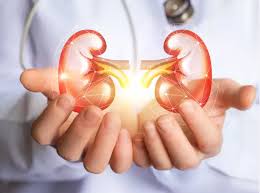
Nutrition and Fluid Control:
Dietary restrictions are common for dialysis patients to maintain health and avoid complications. Understand what you can and cannot eat and learn to manage your fluid intake carefully.
Infection Prevention:
Dialysis patients are at risk of infections. Learn about proper hygiene practices and infection prevention measures to protect yourself.
Diet and Nutrition:
Maintaining a balanced diet is crucial. Explore dietary recommendations, including protein intake, sodium restriction, and monitoring potassium and phosphorus levels.
Exercise and Activity:
Regular physical activity benefits your overall health. Find ways to stay active and incorporate exercise into your routine.
Emotional Support:
Managing kidney disease and undergoing dialysis can be emotionally taxing. Seek support from friends, family, or support groups to help you navigate the emotional challenges.
Medication Management:
Adherence to prescribed medications is essential. Keep a medication list, follow your healthcare provider’s recommendations, and report any side effects promptly.
Regular Medical Check-ups:
Stay on top of your health by attending regular follow-up appointments with your healthcare team to monitor your kidney function and overall well-being.
Kidney Transplant:
For some dialysis patients, kidney transplantation may be an option. Stay informed about this potential long-term treatment and discuss it with your healthcare provider if it’s suitable for you.
In your journey as a dialysis patient, knowledge is your greatest ally. By understanding the fundamentals of dialysis, managing side effects, making lifestyle adjustments, and preparing for the future, you can lead a fulfilling and healthy life. Remember that you’re not alone—your healthcare team, friends, and family are here to support you every step of the way.
Additional Resources:
– National Kidney Foundation
– American Association of Kidney Patients
– Dialysis Patient Citizens
Stay informed, stay positive, and keep moving forward on your journey to better kidney health.
Disclaimer: The information provided in this content is for general informational purposes only. It is not intended as medical or healthcare advice, diagnosis, or treatment. Always seek the advice of a qualified healthcare professional with any questions you may have regarding a medical condition or healthcare decisions.


